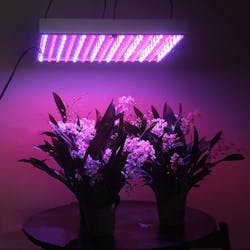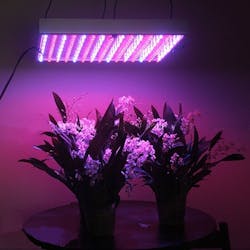The American Society of Agricultural and Biological Engineers has published the first in a series of three planned standards focused on horticultural SSL, with the first focused on definitions and descriptions of metrics.
Interested in articles & announcements on horticultural lighting?
A revolution is happening in horticulture. It’s a seismic shift that will change fundamentally how we grow plants — and it’s all down to lighting. The next Horticultural Lighting Conference will take place in Denver, CO on Tuesday, October 17, 2017. To find out more information and to register to attend please click here.
The standards effort for characterizing LED-based lighting for humans has been underway for a decade or more now. But basic metrics such as efficacy (lm/W) that are directly applicable to humans, since the lumen is based on human visual sensitivity, have little applicability to the effectiveness of light for plant growth. That issue is one we have covered in a number of articles including a feature last September.
Last November, we published a detailed article about the work of the ASABE that had begun back in 2015 and that by last year had become a three-part proactive effort on standards development. As our article described, the first priority was definition of metrics and a new plant biologically active radiation (PBAR) radiometric band that spans 280–800 nm — covering the ultraviolet (UV) region below human visual sensitivity and the far-red region above.
The horticultural sector has for some time used de facto metrics such as photosynthetic photon flux (PPF) and photosynthetic photon flux density (PPFD) that are based on the photosynthetically active radiation (PAR) band from 400–700 nm. Those metrics remain useful. But UV light is now known to impact plant morphology. And the far-red region can impact seed germination, flower induction, plant height, and leaf expansion. The new standard will add new metrics in those regions.
The ASABE announcement said the S640 standard would be available for purchase in six weeks. But the standard appears to already exist in the ASABE Technical Library. Visit that library (http://elibrary.asabe.org/) and search for S640 and an offer to purchase the standard will be displayed. The non-member price is $61.
The new standard, as well as the continued development of the next two standards in the pipeline, will certainly be detailed at our upcoming Horticultural Lighting Conference. Make plans to join us Oct. 17 in Denver, CO.







